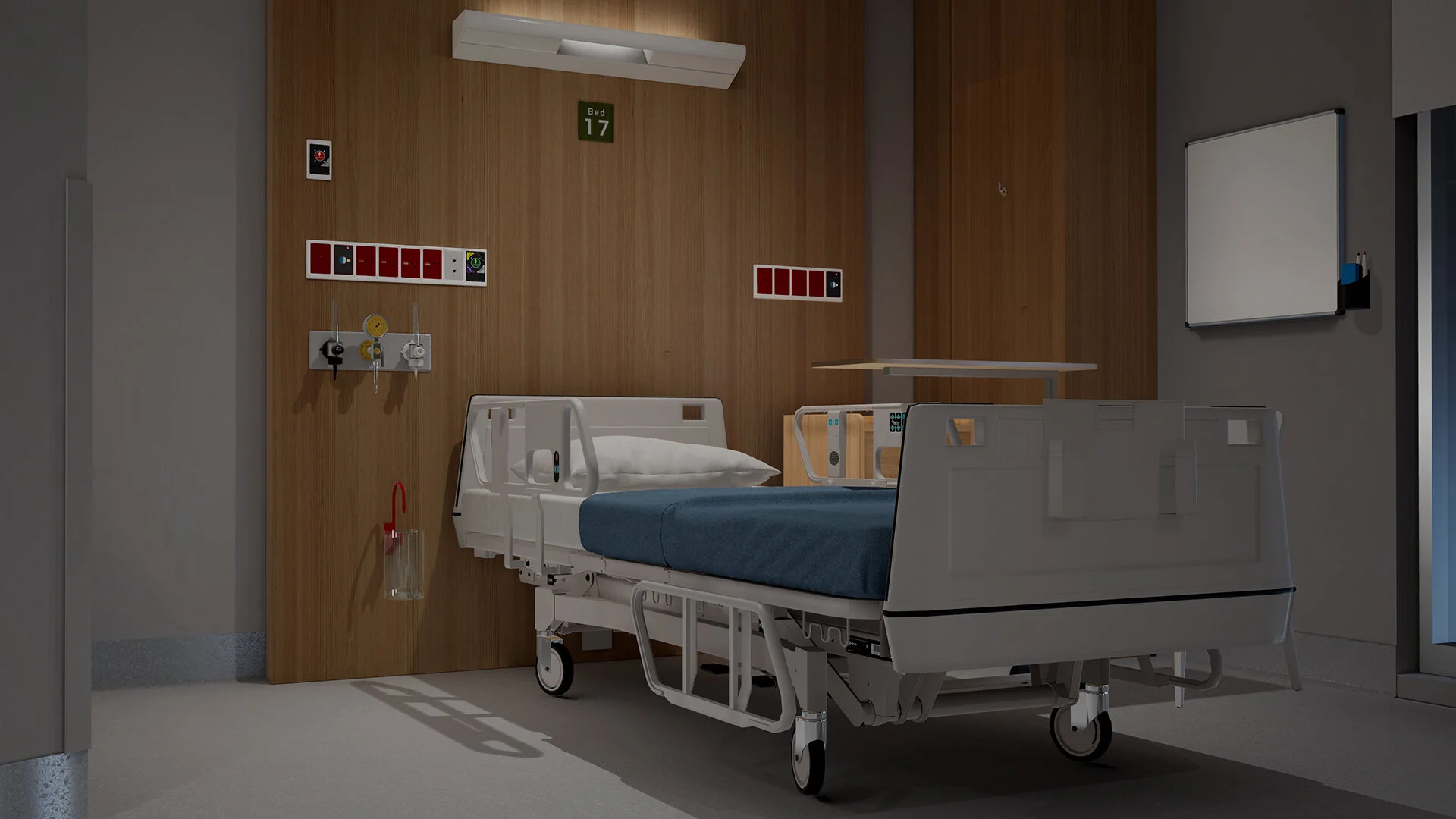the Standard hospital rooms vr prototype was created to test the viability of replacing physical prototypes with virtual versions.
‘Standard hospital rooms’ are the rooms that appear multiple times throughout a hospital building. Ensuring that the design of one of these rooms is 100% correct before construction begins is of critical importance during the delivery of a new health facility. This is usually done with two and three dimensional drawings. In some instances physical prototypes of these rooms are built so key stakeholders are able to test and trial the proposed space together. This enables them to collectively identify any issues and/or to refine and adjust the design to avoid building the wrong thing many times over.
Physical prototypes can be costly and time consuming and as a result not always able to be used.
Our Approach
We developed fully interactive VR prototypes of three standard hospital rooms; a clean utility, a two bed inpatient room and an operating theatre. All key functions of these rooms are operational and the users can simulate tasks and systems exactly like they would in the real room. By embedding multi-user functionality in our prototypes we can facilitate key stakeholder meetings where stakeholders are able to be present in the virtual room together and replicate the environment of the physical built prototypes.
Outcome
We have tested our VR prototypes on multiple key stakeholders who are actively involved in evaluating either drawn or physical prototypes of standard hospital rooms on live projects. The feedback that we have received to date is that our VR prototypes provide an excellent solution to enable a thorough and rigorous evaluation that surpasses two and three dimensional drawings and have the potential to replace built physical prototypes.
Not only are virtual prototypes significantly less expensive to build than a physical one, but in instances when physical prototypes cannot be afforded due to time or cost, they offer an immersive and highly effective virtual alternative. In addition, they allow for multiple rapid design iterations to ensure a better design outcome than is currently possible with their physical counterparts.










